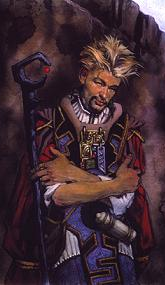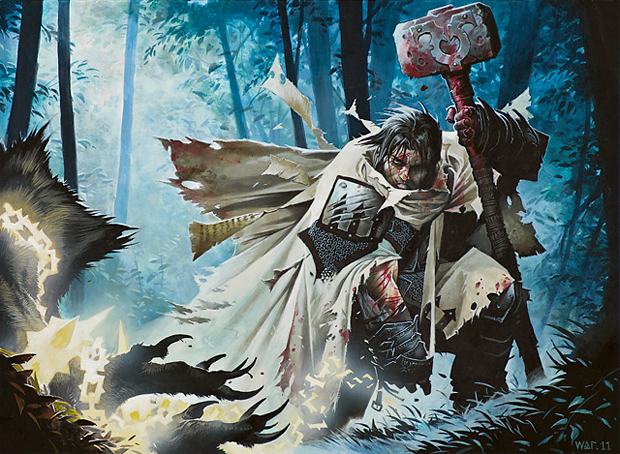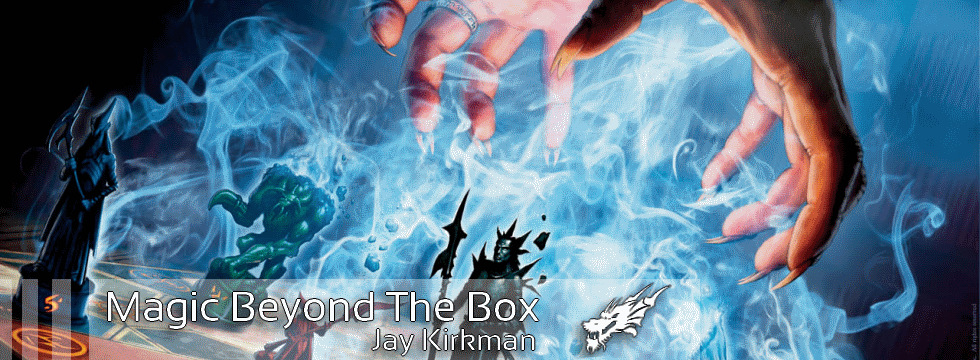Are you a Quiet Speculation member?
If not, now is a perfect time to join up! Our powerful tools, breaking-news analysis, and exclusive Discord channel will make sure you stay up to date and ahead of the curve.

It's that time again! A feature that's become something of an annual tradition here on Quiet Speculation, we look back at the end of a block and rate its preconstructed decks. Which were the picks of the litter, those decks that brought something new and exciting to the table? And- yes- which were the worst, the ones that didn't quite live up to the promises of expectation and hope.
Because we're glass-half-full people at heart, we'll be beginning with a look at the best of the bunch, but for those who delight in the other end of the spectrum won't have long to wait.
Innistrad block has certainly brought with it plenty to get excited about, much of which was captured and preserved for posterity in its precon decks. We were given a slew of new tribal decks as well as some compelling new mechanics to play with. Sadly, the dual-faced cards were deemed too complex for inclusion in the Intro Packs, and didn't manage to find purchase in an Event Deck. As such, they find themselves in the forgotten class of sidelined mechanics, alongside miracles and fateful hour.
Still, we come not to bury Innistrad Block, but to praise it. Over the past year we at Ertai's Lament thoroughly tested each precon deck from the set and assigned each a score. We'll now look at the top five of the block, counting down to the very best of the bunch. As an added bonus, we'll then take a look at the Event Decks and present our picks of the best two of those as well!
5. Bound by Strength (Avacyn Restored) and Fiery Dawn (Avacyn Restored)
Wouldn't you know, a tie! Avacyn Restored brought us both of these decks, and they do a fine job of telling the story of the set in miniature. With Avacyn now returned to the benighted plane, the hunted and harrowed people of Innistrad have found the courage to come out from their barricaded homes and shuttered hearts. The fiends that have terrorized them for two sets are back-footed, and with renewed vigour the goodly folk are taking the fight to them.
The very concept of the hunted teaming up to become the hunters are at the very core of the new soulbond mechanic, and Bound by Strength is that mechanic's showcase deck. Packed with a ton of creatures designed to partner up and bring a power greater than the sum of their parts to the table, the deck was able to bring a ton of threats on-line in a steady stream of beaters. Reflective of Innistrad's removal-light environment you had few ways to impose your will on the battlefield outwith the red zone, but with the right soulbond pairings you could outpace your opponent and take the fight to them.
We saw this narrative reflected in Fiery Dawn as well, albeit in a much less overt manner. To understand the significance of this Red/White construction, we need to jump back two sets to Innistrad. Back then, the protective wards were faltering, and the night was encroaching upon the human settlements thanks to the abrupt and unexplained disappearance of the plane's guardian angel, Avacyn. Humanity's plight was unveiled in the Green/White Intro Pack deck Repel the Dark. While an entertaining enough deck in its own right, it lacked a certain punch, and if you got the impression that the Humans were circling the wagons, well, you weren't alone.
In earlier sets, Red Humans weren't the kinds you'd want to encounter in the night, being Werewolves and Cultists in the main. For the set's third act, the more pensive Green was out in favour of the fiery Red, as the Humans pulled their swords and pikes down off their mantles and burst forth to smite the things that go bump in the night. The aggressiveness the colour affords was a perfect base for the deck, and put this one far ahead of its earlier predecessor.
4. Dark Sacrifice (Dark Ascension)
We enjoyed the look and feel of this deck for a number of reasons, not least because of its historical significance. In a game where many remember the purging of objectionable creatures types like "Demon" and the sanitising of art with a whiff of occultism to it (see the early Unholy Strength), to find a deck where the objective was to play Humans and then sacrifice them to the forces of darkness was a sign of the game's maturity.
Of course, that alone wouldn't be enough to rate it on this list, so fortunately the deck is a blast to play. In a medium where most decks tend to be creatures + supporting effects = RAWR!, it's always a treat when Wizards sends something down the path that's cast from a different mould. Not for nothing he spell-heavy Mirromancy topped our list of best decks of Scars of Mirrodin Block last year. This time we get an updated sacrifice-engine deck in the grand tradition of some of the game's best theme decks like Coldsnap's Beyond the Grave and Mirrodin's Sacrificial Bam. Play out your altar-fodder, then sacrifice them up to reap up life, +1/+1 counters, or repeatable creature kill. The Dark Side is strong with this one!
3. Relentless Dead (Dark Ascension)
By the time the middle set of the block rolled around, it was a great time to be a Zombie. Already unearthed amongst a wicked garden of delights such as Endless Ranks of the Dead and Army of the Damned, Dark Ascension added a nasty lord to the mix in the Diregraf Captain, and at uncommon no less! It was the perfect tie-together for the divergent Zombie types we'd been introduced to in the first set.
On the one hand, you had the traditional "shambling undead" Zombie type in Black, the kind that claws its way out of its own grave at the ghoulcaller's beckoning. Not to be outdone, demented "skaberen" were cobbling together body parts, branding them with arcane symbols and bringing their patchwork dead back to a mockery of life. These Blue Zombies were flavourfully quite different, often requiring the exile of creatures from the graveyard as a condition of casting.
All of this came together for a delightful bit of tribal brain-eating with Relentless Dead. Though it had its share of filler and the typically poor removal suite (in Blue and Black!), the deck came together tighter than a skaberen's stitching.
2. Eldritch Onslaught (Innistrad)
The precons of a block's first set often seem to be the weakest, since as a rule they have the smallest card pool from which to draw (though to be fair, large-set closing acts like Avacyn Restored and Rise of the Eldrazi have the same limitation). Indeed, last year only one Scars of Mirrodin deck cracked the top five, and even then it was last on the list. Fair play to Eldritch Onslaught then for coming within grasping distance of top honours. Like the aforementioned Mirromancy, Eldritch Onslaught made a name for itself by defying the conventional formula and attacking the precon metagame from a different angle. Though we'll likely never see the likes of Stronghold's The Sparkler again, with its three creatures and bajillion spells, Edlritch Onslaught had relatively muted number of them- fifteen- and many of them were there to support the spell-heavy strategy of using and abusing flashback for incremental advantage.
Novelty is all well and good, but what rates the deck so highly is that it worked. With thirteen of the deck's twenty-one noncreature cards being able to be played out of the graveyard, the deck also had something almost no other deck in the block was given- a hefty removal package. Eldritch Onslaught could bounce and burn with the best of them, then looked to land a finisher like Sturmgeist or Murder of Crows to close the game out. All in all, this was a great way to kick off the new block.
1. Grave Power (Dark Ascension)
When we reviewed Grave Power on Ertai's Lament earlier this year, we had this to say:
Although we try and avoid hyperbole when assessing the decks, it would be unfair to credit Grave Power with anything less than recognition for being one of the best Intro Pack decks we've ever seen- and certainly near the top of the Theme Decks as well. This is the rarest of precons- one that treats each card slot as something not to be squandered, has a cohesive theme and the strategy to get there, and throws its full weight behind it to support it.
Our enthusiasm has in no way diminished with the passage of time, and its crowning here as the "best in block" is fully warranted. Consistent from pillar to post, this deck took the same strategy as the Event Deck Deathfed and did it one better- with far less resources available to it. Often with Intro Pack decks we'll see one rare card that fits well within the theme, and one that isn't a perfect fit but does the job well enough. Though this tendency has lessened somewhat after Wizards adopted the policy of the non-foil rare being from the base set rather than having both rares come from whatever expansion the Intro Pack supported, the two in Grave Power were pitch-perfect. An early Splinterfright was like turning on a tank of nitrous in a race car, and in the removal-poor Innistrad environment a monstrous beater like the Ghoultree tends to stick around.
If you were going to experience this block through the lens of only one Intro Pack deck, this would be the one. It was an absolute joy to play, and we hope its a harbinger of things to come for the format.

Bonus: The Event Decks
Although we haven't touched upon these in previous annual write-ups, it's an overdue addition since we review and rate the Event Decks just as we do all other precons. Since our "top five" list of Intro Packs scoops up the cream of the top one-third (or so- Scars Block had only fourteen Intro Packs thanks to being one light in Mirrodin Besieged), it only makes sense to hold to the same proportion. On that note, here are the two best Event Decks to come out of the block.
2. Hold the Line (Innistrad)
The White-weenie competitive archtype got an update with Hold the Line, after first being given the Event Deck treatment with New Phyrexia's War of Attrition. War was noteworthy for having the then-recently-banned Stoneforge Mystic in the deck, but Hold the Line could draw on no such power. Instead, Hold the Line looks to race off the blocks the very moment the starter's pistol fires, with an impressive eleven one-drops. Indeed, no creature in the deck costs more than three mana, and with four of those being Fiend Hunters, the deck has very strong tempo and removal options available to it.
We've noted here before how speed is the greatest weapon in the Event Decks' arsenal, given their avowed aim to keep you competitive at the Friday Night Magic tables. Hold the Line is blisteringly fast, though it is susceptible to stalling out in the mid-to-late game as all decks of this archetype tend to be. Still, with an impressive amount of removal at its disposal, what Hold the Line can't go through it can go over
1. Spiraling Doom (Dark Ascension)
The top deck here is one of the highest-rated decks we've ever reviewed on Ertai's Lament. Once upon a time here on Quiet Speculation, I mused that the need for speed was limiting what sorts of Event Decks Wizards could put together. Four decks in on this new product line, the adventurousness on display with Mirrodin Besieged's midrange Infect & Defile seemed tempered by results. Infect & Defile wasn't a bad deck, it just didn't live up to the competitive promise. Unsurprisingly, the next two decks for New Pyrexia were more of the "speed kills" vein, making up for limitations on card rarity and power by compensating with quickness.
We've been delighted to see the Event Deck line mature and prosper, with forays back into the midrange better tuned to withstand the rigours of Standard. Spiraling Doom was the pinnacle example of this, a toolbox deck that keys off of a single card: Birthing Pod. With Pod decks already competitive, it was a great archetype to build from with the inclusion of undying creatures. With answers for nearly any threat you could face staggered over a consistent chain of converted mana costs, the deck was remarkably consistent even if it did suffer from not having access to an extra Birthing Pod (easily remedied for those taking the deck into the field).
Time and again we've enjoyed decks that take the less-traveled path and still find ways to put up the wins. A stock 24-creature, 12-spell deck can be a lot of fun to play, but the focus on that formula tends to diminish the variety of win conditions we know the game is more than capable of. Such decks always get our attention...but they have to do more than that to attain ratings high enough to be included on the annual "best-of" list. The decks presented here today have done so, and claimed their rightful reward.
Thanks for joining me today in a look back through Innistrad block. We're already looking forward to the start of the next as we Return to Ravnica in the fall, but in the meantime we'll be back soon to look at how the other half lives as we present the worst decks of Innistrad block. See you then!
______________________
Jay Kirkman






Love these articles. They always make me want to buy those decks and give them a spin.
I guess that day all the people must be very happy.This is a wonderful post, Given so much info in it, These type of post keeps the users interest in the website, and keep on sharing more…